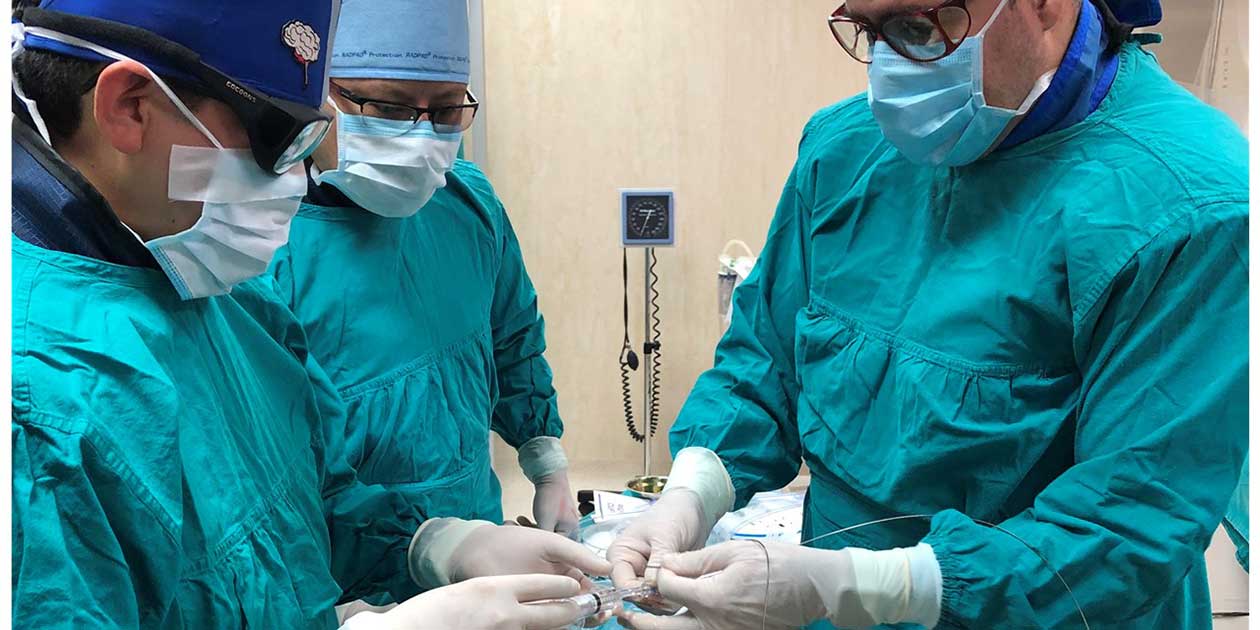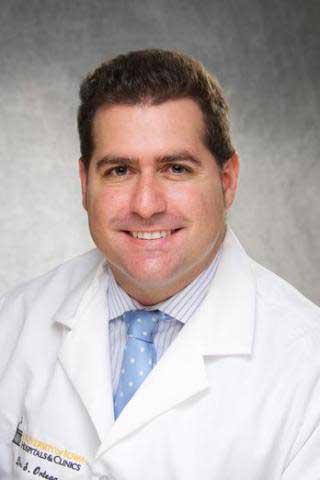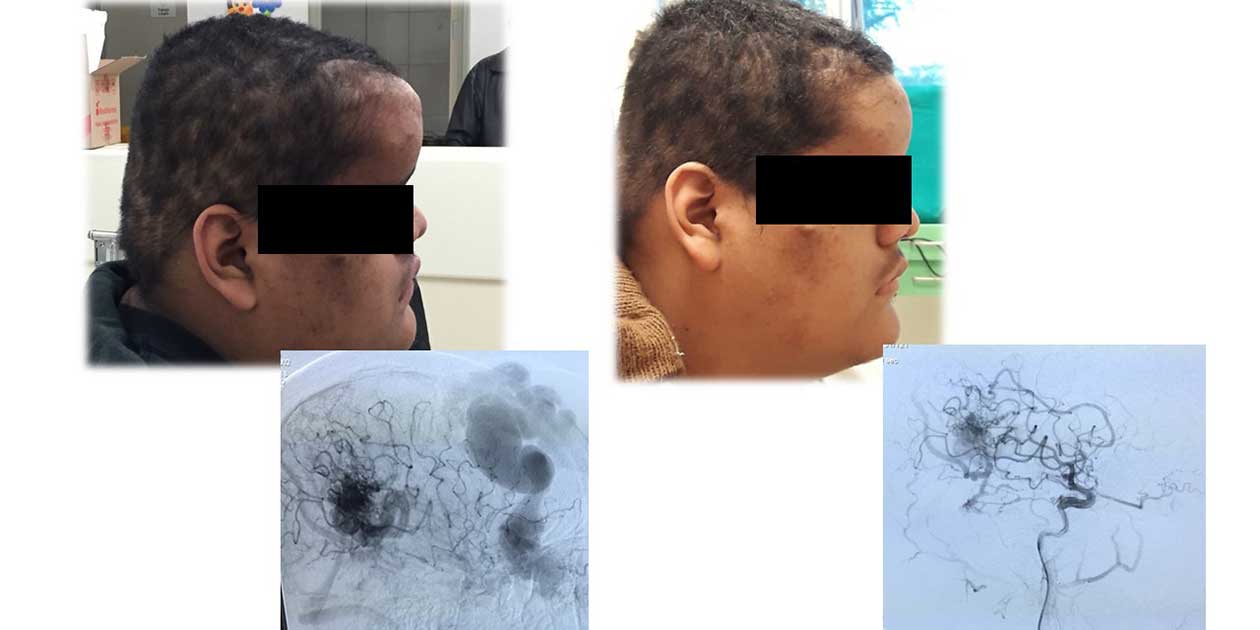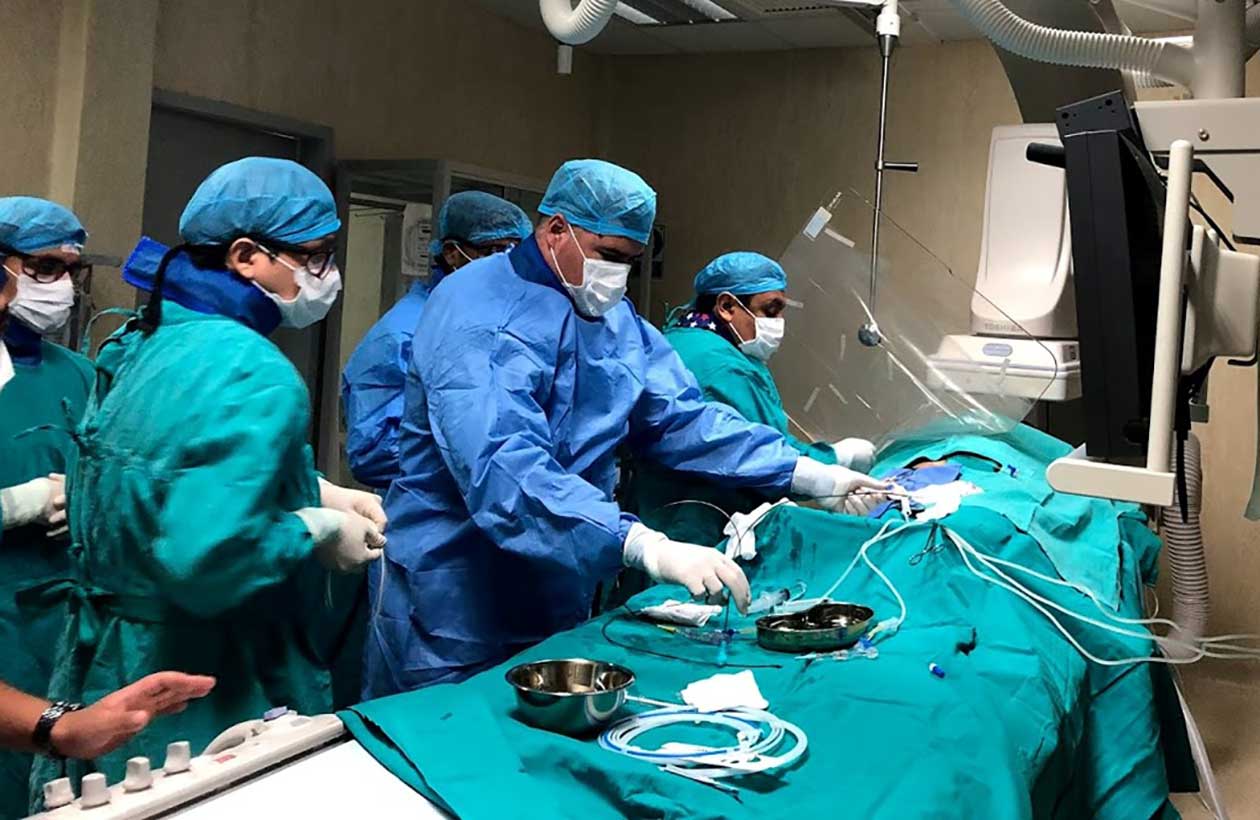Iowa Surgeon's Innovations are Game Changer for Stroke Patients
 PHOTO: UI CEREBROVASCULAR & NEUROINTERVENTIONAL LAB
UI surgeon Santiago Ortega-Gutiérrez, pictured at right, has treated more than 50 critically ill South American patients on his international service and training trips.
PHOTO: UI CEREBROVASCULAR & NEUROINTERVENTIONAL LAB
UI surgeon Santiago Ortega-Gutiérrez, pictured at right, has treated more than 50 critically ill South American patients on his international service and training trips.
Diana Gradert's youngest daughter went for a run one day in 2010 and never came home. Leah Maurer was only 42 when she collapsed in the street from a brain aneurysm and died at the hospital. This devastating loss led her mother to connect with a renowned University of Iowa physician whose groundbreaking work is helping spare other families such pain.
Santiago Ortega-Gutiérrez, clinical associate professor of neurology, neurosurgery, and radiology, is a neurointerventional surgeon who operates without making incisions and is an expert at using minimally invasive treatments and imaging equipment to guide procedures. He's on a global mission to develop and perfect new techniques for treating life-threatening conditions of the central nervous system, including strokes and cerebral aneurysms.
 PHOTO: UI HEALTH CARE
Santiago Ortega-Gutiérrez
PHOTO: UI HEALTH CARE
Santiago Ortega-Gutiérrez
That's why Gradert, former CEO and current board chair of WTC Communications, her family-run telecommunications firm, chose to invest in Ortega-Gutiérrez's efforts through donations totaling $100,000. "I believe more attention should be spent on making the public aware of the signs of stroke—and this includes physicians in Iowa and around the world," says the Wilton, Iowa, native. "I believe in Dr. Ortega's vision, and I want to help him grow this program."
The Spanish surgeon—whose training in the United States included prestigious fellowships at Columbia University and Mount Sinai—joined the UI Department of Neurology in 2014 with the same goal. He saw an exciting opportunity to expand Iowa's neurointerventional radiology program, which was still in its infancy, and build upon the university's strong tradition of stroke research.
Not only has Ortega-Gutiérrez done so, introducing new treatments, research, and therapies, but he's also established a cerebrovascular and neurointerventional lab, a fellowship program for educating other physicians, and an international service and training program. "It's my duty, as a clinical scientist, to pass on as much knowledge as I can—and to share my personal experiences with new generations," says Ortega-Gutiérrez.
So far, thanks to Gradert's financial support, he's been able to help more than 50 critically ill South American patients through frequent trips to underserved countries, where he performs surgeries and educates local doctors in his advanced techniques. Ortega-Gutiérrez—who sits on the board of directors of the Society of Vascular Interventional Neurology—also provides highly specialized training for the physicians in his UI fellowship program.
Cynthia Zevallos, of Pirua, Peru, was one such fellow. She first met Ortega-Gutiérrez as a young medical resident in Lima, when he visited her hospital on a mission trip. "He talked about the University of Iowa, but to be honest, I never thought I'd come here," says Zevallos.
 PHOTO: UI CEREBROVASCULAR & NEUROINTERVENTIONAL LAB
Before-and-after images of a 16-year-old Peruvian patient with a neurovascular malformation causing a forehead deformity. The patient's family had consulted with local physicians but was told there were no therapeutic options available. The left image shows the baseline presentation, and the right is the outcome after Ortega-Gutiérrez performed a non-invasive neurointerventional surgery.
PHOTO: UI CEREBROVASCULAR & NEUROINTERVENTIONAL LAB
Before-and-after images of a 16-year-old Peruvian patient with a neurovascular malformation causing a forehead deformity. The patient's family had consulted with local physicians but was told there were no therapeutic options available. The left image shows the baseline presentation, and the right is the outcome after Ortega-Gutiérrez performed a non-invasive neurointerventional surgery.
However, she stayed in touch with Ortega-Gutiérrez throughout her career and ended up joining the fellowship program in 2018. She'd lived in the rain forest with indigenous communities during her residency and saw many patients suffering from stroke damage. This has inspired her to learn as much as possible at Iowa, with the goal of eventually returning to Peru to establish a network for improving endovascular stroke care.
Zevallos currently works in Ortega-Gutiérrez's lab, where the research they're doing is transforming the field—and even shaping American Heart Association treatment guidelines. For example, they played a central role in lengthening the approved window of time in which doctors can use mechanical thrombectomy—the process of threading specialized instruments through the arteries of a patient with acute onset of stroke to extract a blood clot from the brain—from six to 24 hours.
Ortega-Gutiérrez, who will be principal investigator on two upcoming international clinical trials, plans to expand upon such groundbreaking research in hopes of eventually receiving significant National Institutes of Health funding. "We want to be the ones creating and running these trials," he says. "Diana's support helped put us on the map—and build Iowa's reputation—and now we want to do even more to change the world."

